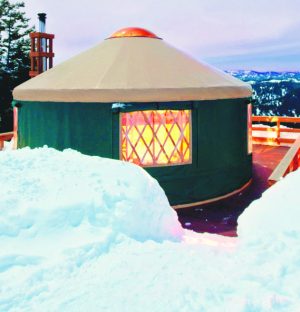 April 19, 2011 (Barrie, ON) – As I mentioned in my previous report, spring is the time when cross-country skiers should sit down and evaluate their previous season and start the process of setting goals for the upcoming year based on this evaluation – read Evaluating Your Season and Setting Goals HERE.
April 19, 2011 (Barrie, ON) – As I mentioned in my previous report, spring is the time when cross-country skiers should sit down and evaluate their previous season and start the process of setting goals for the upcoming year based on this evaluation – read Evaluating Your Season and Setting Goals HERE.
You should have goals in all areas of your life and in skiing – not just based on results. In fact, establishing goals based on results are the hardest to factor because they’re based primarily on what other people do as well and this is something you can’t control. In order for goals to be realized, they need to be in areas that you’re able to control.
How many of you have a “dream” goal? A dream goal is essential to your ski career. It sets the top rung for you and gives you a reason to go out every day for years to train. It helps you to make the hundreds of decisions that you have to make that will affect your life each day. Your dream goal is the light at the end of the trail that pulls you forward. All of your other goals are there as steps on the trail towards your dream. Your dream goal can be down the road a few years or you can have one set for each season.
In 1989 I was coaching Marie-Josee Pepin. M-J had finished 16th at the Junior Worlds the year before as a 17-year-old and when we sat down to lay out her spring goal-setting I asked her what her dream goal for the year was. She told me that she wanted to finish in the top 10 at the Junior Worlds the next year. I told her that I thought she should aim a little higher – for the podium – and if she fell a little short that she would still be in the top 10. She ended up finishing 2nd and after she stepped down from the podium with her medal she said to me “Being up there on the podium was just the way I dreamed it would be.”
Your goals also need to be SMART.
S – making your goals SPECIFIC means that you need to have goals in every area of your life. Think of the four tires that I talked about in my previous article HERE. Break each area down and make as many goals as you can for each of these areas.
M- MEASURABLE goals require recording and accuracy. Here is where a good training diary comes in. By recording what you do, how much, how far, how you felt, when, and where you can see where you are and make goals going forward. Don’t just think about overall training volume here but all of the other areas in the mix that are important, too. Keep track of how long and at what heart rate it takes you to climb your favourite hill or to ski, run, ride or roller ski around your favourite loop and see what you can do to set goals to improve. Keep a log of what you do in the weight room. The more data you have the better. Cross-country skiing is difficult to measure because the snow changes every day, so the more data you have in other areas the better it will be for you.
A – your goals need to be ACHIEVABLE. For Marie-Josee the goal of finishing in the top 10 after finishing 16th the year before in the World Junior was achievable. The training goals that we set to reach this dream goal were also based on what she had done in the previous years. I believe that for goals to be achievable you should have a 50-50 chance of reaching them. If you set the goal too high you will know it deep down inside and will not attain levels as high as you can. If you set your goals too low they will be too easy to achieve and you will not push yourself hard enough.
R – REALISTIC goals are tied to achievable goals. If you are going to school full time and taking science labs at university it’s likely not very realistic to think that you can train 850 hours per year and handle both well. Going from a club program to the World Cup in one year is also not realistic for most skiers, either. This is where having a coach or mentor to help you to set your goals can help a lot. We cannot be objective about ourselves and as a result tend to set unrealistic goals if trying to set them alone.
T – your goals should have TIME FRAMES. It is no good aiming for something if there is no target date attached to it. Without it our human nature can allow our “procrastination genes” to switch on, and then we have an achievable “gonna do” goal that never materializes. So time frame your goals to keep the urgency there.
All of the correct goal setting and training in the world is of no use if you have no confidence. Confidence comes from knowing that you have prepared yourself as well as you can and also from knowing your own capabilities. Most elite athletes never lose confidence in their abilities and do not tie their confidence to their results. The so-called “streaky” athlete is a person who is confident when they are doing well and lose confidence when they have poor results. It is hard to stay confident all the time, but if it was easy then everyone would be able to do it.
You also have to have a ‘belief” that you can reach your goals. The word belief comes from the Middle English phrase that means “be in love with”. It is extremely hard to reach goals unless you love training and skiing. In order to reach a very big goal there has to be a belief or a love of the outcome that is much bigger than any obstacles on the way.
Obstacles are what you see when you take your eyes off the goal. With goals you can and will succeed. Without them you will be like a pilot taking off from an airport without a flight plan and heading off in and arbitrary direction. You may eventually reach where you are going but you might run out of fuel before you get there.






![National camp action [P]...](https://skitrax.com/wp-content/uploads/2019/08/Duluth-4-2019-08-08-at-10.46.51-AM-300x246.png)
![Matt Liebsch on the CXC Elite Team [P] CXC...](https://skitrax.com/wp-content/uploads/2019/08/Matt-Liebsch-CXC.2-525x700.4-300x267.jpg)
![Dan LaBlanc [P]...](https://skitrax.com/wp-content/uploads/2019/08/Dan-LaBlanc-img_1855.3.jpg)
